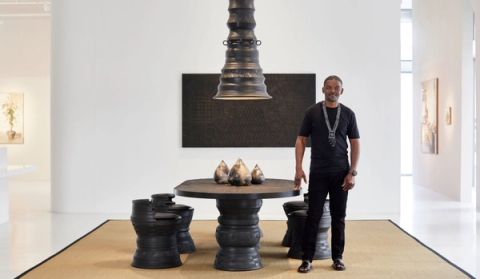My Enquiry (0)
No artwork has been selected.
Please choose an artwork to enquire.
Enquiry Submitted
Thank you for your enquiry and interest in our artists’ work. A member of the gallery team will respond shortly.
000%
14 November 2024 - 30 January 2025
A master of wheel-thrown ceramics, Chuma Maweni has pioneered the translation of Xhosa pottery traditions into contemporary collectible design, evolving new typologies of form and applications of scale that are entirely distinct.
Southern Guild Cape Town is pleased to present iMvelaphi, a solo exhibition of functional artworks by South African ceramicist Chuma Maweni, opening on 14 November, 2024 (until 30 January, 2025). The artist’s first solo exhibition, iMvelaphi is also Maweni's largest collection of handcrafted furniture, lighting and vessels to date.
This body of work is a meditation on Maweni’s familial and cultural origins, drawing links between the cyclical expansion of life and the spiritual symbology at the heart of his own studio practice. The exhibition’s isiXhosa title translates to “where I come from”, encompassing both one’s literal birthplace and the totality of biographical experiences that have formed one’s identity. In looking back, Maweni considers not only his personal trajectory growing up in the rural Eastern Cape, but his evolution of ceramic forms as well. Both are bound by the reflexive rhythms of circularity – the idea that changes emanate and growth ripples out from a central point, looping back and echoing outwards rather than proceeding in a linear progression.
Born in 1976 in Gqeberha in the Eastern Cape, Maweni moved with his family in the 1980s to KwaPayne village in the rural area of the then Transkei to escape the upheaval of anti-Apartheid riots. He traces his craft to his earliest memories sculpting clay bulls on the muddy riverbanks, before going on to study ceramics at Nelson Mandela Metropolitan University and graduating in 2002.Since opening his own studio in Cape Town in 2016, Maweni has cultivated a thriving practice marked by technical discipline and creative refinement. His journey into ceramic furniture was set in motion with his burnished and smoke-fired Tear Drop Canister series, which exemplifies the purity of form and flawless sense of craftsmanship that defines his work today. The lidded canisters led to the creation of larger vessels whose natural extension was his iconic Imbizo table and stool set, themselves giving rise to a larger family of related stools, plinths and tables in black stoneware clay.
Working at the wheel, almost everything Maweni creates begins as a vessel that opens up or closes back in around a central point. He points to the prevalence of circular forms in traditional African design: rural rondavels historically built with a central supporting pillar called an ‘intsika’, the ‘ukhamba’ pot out of which the community drinks ‘umqombothi’ (traditional beer), the kraal enclosure for livestock at the heart of each homestead.
Working with meticulous precision, Maweni’s furniture and sculptural works are defined by an exceptional sense of balance, their dark silhouettes articulated by crisp ridges and bands of carved patterns. “The wheel is the master for me,” he says. “I have to negotiate and communicate with it. I have to stay alert to its rhythm. I can’t allow anything to disrupt my focus – the movement of my hands and the steady pressure of my foot on the pedal.”
Making wheel-thrown forms requires the maker himself to become a vessel – contained, firm, still; the mind and body in equilibrium. The ceramicist’s hands become the tools – a fist pressed down evenly from above centres the spinning mound of clay, a tightly folded index finger acts as a wedge to pull up the sides, cupped palms create a cone shape. Maweni’s vocabulary of forms begins with a series of concave and convex volumes, varied in their shape, scale and incised surface patterns, joined seamlessly together to build objects – the largest of which is a 1.5 metre-tall chandelier made entirely of clay. Consisting of nine undulating forms leading to a shade that flares out widely at the bottom, the light is named Maweni, after the great-grandfather who gave the artist’s family their last name. Many of the other works in this exhibition are named after important ancestors, a collective acknowledgement of shared lineage and regeneration of their memory for generations to come.
iMvelaphi will debut a number of new tables combining ceramic with metal and wood. Whereas previously Maweni had carved into timber to create the tops, these works feature horizontal surfaces made from clay tiles. The pieces are cut from large slabs of clay etched with geometric motifs and patterns, resulting in a proliferation of positive and negative shapes. Once extracted, the tiles are left to dry for a number of weeks, fired and then pieced back together like a puzzle before being attached to the tabletop in the original configuration. It is a painstaking process but the tiles need to be kept small to avoid warping in the kiln.
Whether engraving two-dimensional patterns or conceptualising composite designs from individual forms, Maweni’s process is iterative: one pattern gives rise to another, a new shape begets a series of stools, tables, chairs. A feedback loop born out of the natural rhythms that govern our existence and in the most ancient of materials – clay itself.
iMvelaphi will run concurrently with artist Ayotunde Ojo's solo exhibition, These Four Walls.
Artist
Works
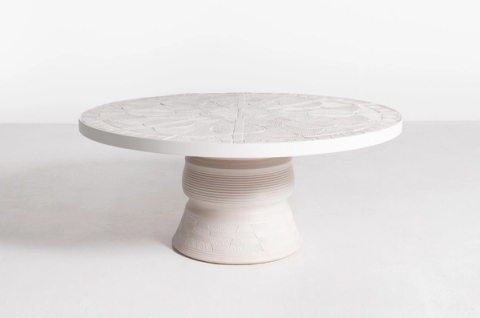
Chuma Maweni
MaDlamini (Nompumelelo), 2024Glazed stoneware
18.25 x 42.63 x 42.63 in. | 46.3 x 108.4 x 108.4 cm
Edition of 12, 2AP

Chuma Maweni
Gushibhekile, 2024Glazed stoneware, mild steel
29.5 x 93.75 x 47.25 in. | 75 x 238 x 120 cm
Edition of 8, 2AP
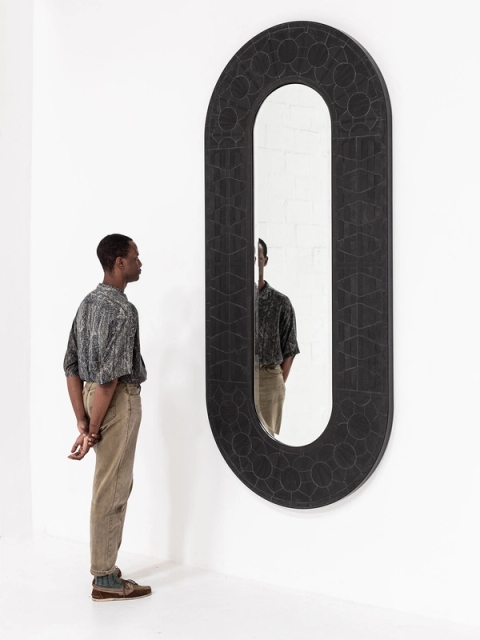
Chuma Maweni
Vuyani, 2024Glazed stoneware, mild steel, mirror
39.38 x 108.25 x 4 in. | 246 x 110.4 x 5.3 cm
Edition of 8, 2AP
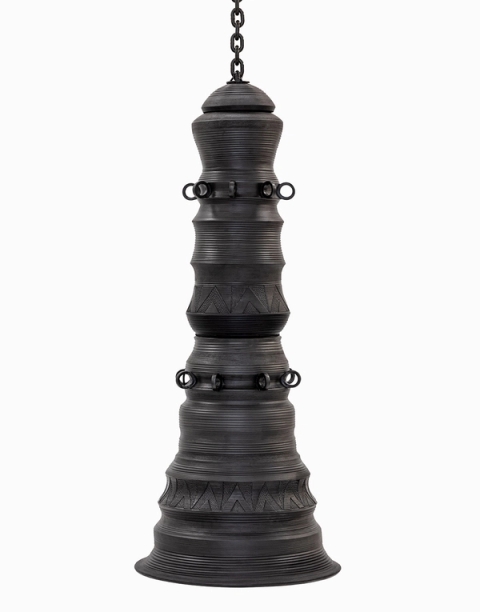
Chuma Maweni
iSibane (Maweni), 2024Glazed stoneware, glass, steel, lighting components
115.5 x 23.25 x 23.25 in. | 293.5 x 59 x 59 cm
Edition of 8, 2AP
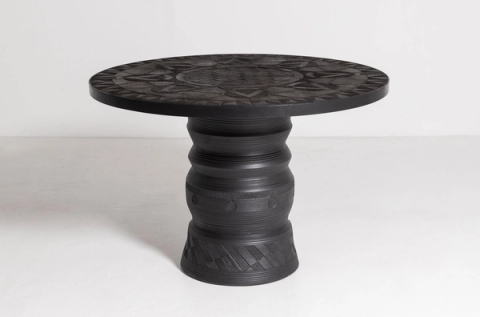

Chuma Maweni
Phindiwe, 2024Glazed stoneware, mild steel
17.75 x 39.38 x 39.38 in. | 44.5 x 110.5 x 110.5 cm
Edition of 12, 2AP
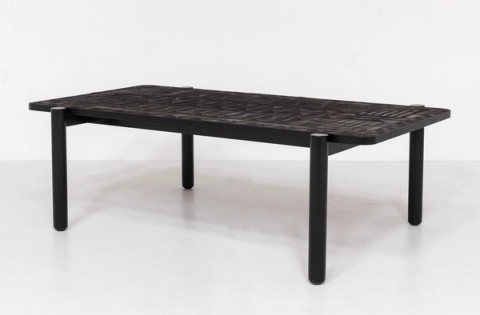
Chuma Maweni
Mvakwedina, 2024Glazed stoneware, mild steel
29.5 x 110.25 x 43.25 in. | 75.9 x 237 x 138 cm
Edition of 8, 2AP
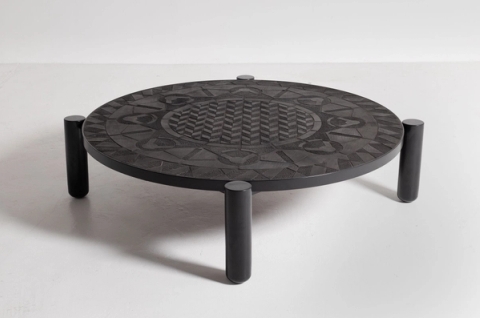
Chuma Maweni
Ngombane, 2024Glazed stoneware, mild steel
13.75 x 51.13 x 51.13 in. | 34.8 x 130 x 130 cm
Edition of 12, 2AP

Chuma Maweni
ooMantlangwame I, 2024Burnished, smoke fired earthenware
29.88 x 13.25 x 13.25 in. | 76 x 33.5 x 33.5 cm

Chuma Maweni
ooMantlangwame II, 2024Burnished, smoke fired earthenware
27.5 x 12.75 x 12.75 in. | 70 x 32.5 x 32.5 cm
Sold

Chuma Maweni
ooMantlangwame III, 2024Burnished, smoke-fired earthenware
26.75 x 13 x 13 in. | 68 x 33 x 33 cm
Sold

Chuma Maweni
ooMantlangwame IV, 2024Burnished, smoke-fired earthenware
26.38 x 12.38 x 12.38 in. | 67 x 31.5 x 31.5 cm
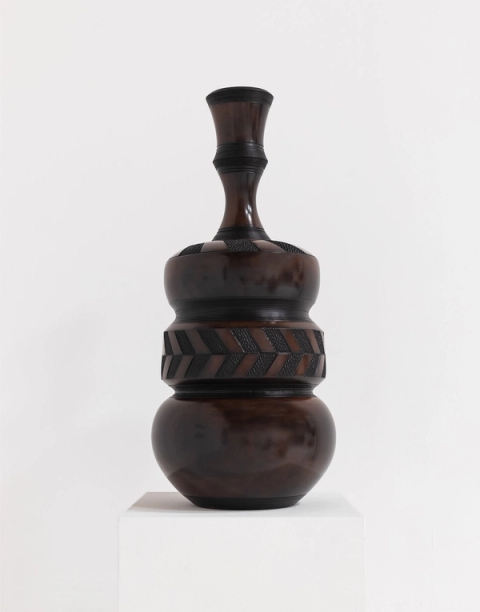
Chuma Maweni
ooMantlangwame V, 2024Burnished, smoke-fired earthenware
32.25 x 11.75 x 11.75 in. | 75.3 x 33 x 33 cm
Sold

Chuma Maweni
ooMantlangwame VI, 2024Burnished, smoke-fired earthenware
32.25 x 11.75 x 11.75 in. | 68 x 31.5 x 31.5 cm
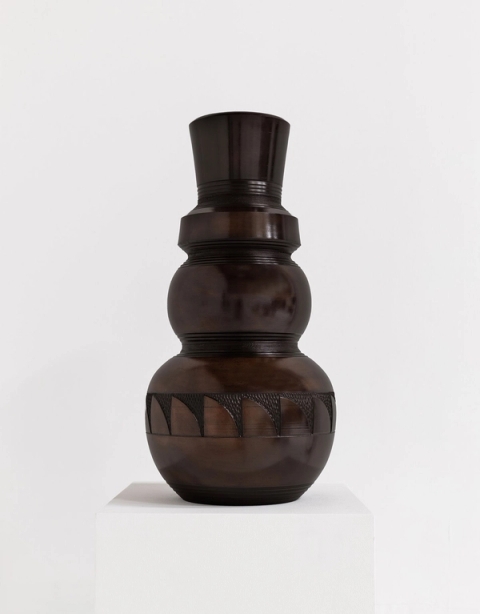
Chuma Maweni
ooMantlangwame VII, 2024Burnished, smoke-fired earthenware
24 x 11.75 x 11.75 in. | 61 x 30 x 30 cm

Chuma Maweni
Imbizo Ibanjiwe (A Gathering is Held) VIII, 2024Glazed stoneware
22.63 x 18.88 x 18.88 in. | 57.5 x 48 x 48 cm
Open edition
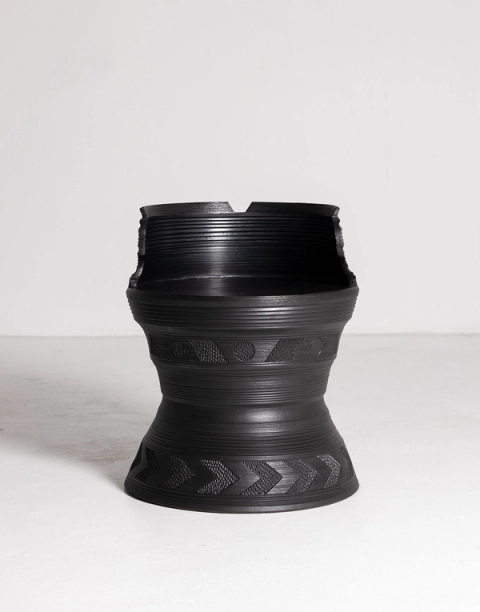
Chuma Maweni
Imbizo Ibanjiwe (A Gathering is Held) IX, 2024Glazed stoneware
23 x 19 x 19 in. | 58.4 x 48.4 x 48.4 cm
Open edition
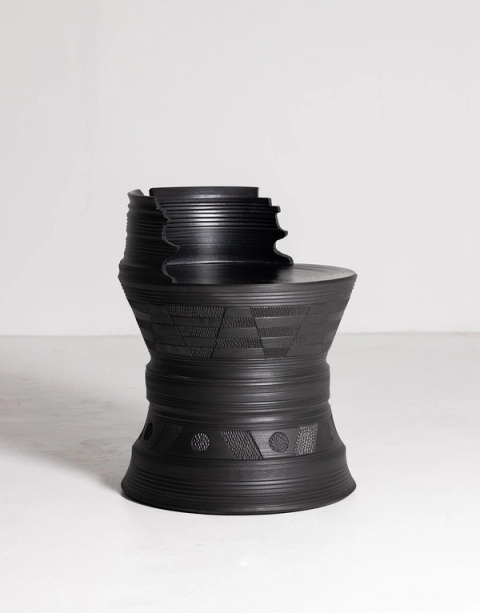
Chuma Maweni
Imbizo Ibanjiwe (A Gathering is Held) X, 2024Glazed stoneware
24.13 x 19.13 x 19.13 in. | 61.2 x 48.7 x 48.5 cm
Open edition
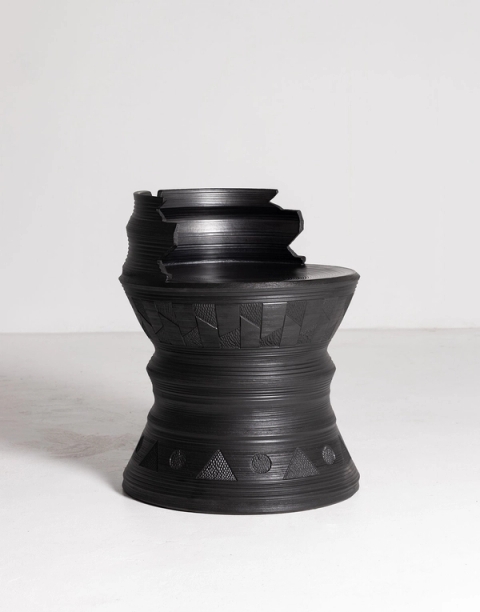
Chuma Maweni
Imbizo Ibanjiwe (A Gathering is Held) XI, 2024Glazed stoneware
24 x 19.25 x 19.25 in. | 61 x 49 x 49 cm
Open edition

Chuma Maweni
Imbizo Ibanjiwe (A Gathering is Held) XII, 2024Glazed stoneware
23.63 x 19.25 x 19.13 in. | 60 x 49 x 48.5 cm
Open edition
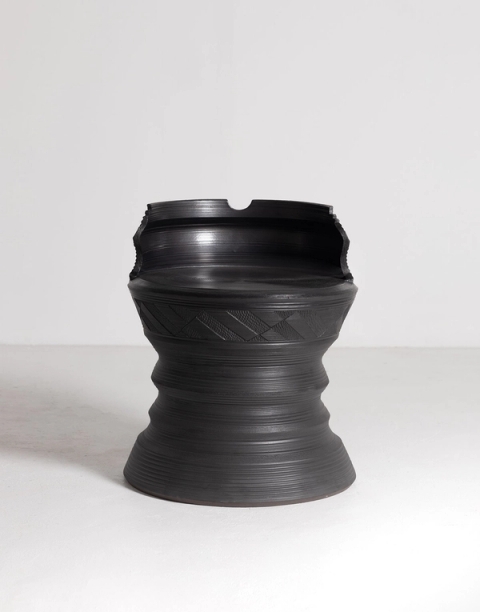
Chuma Maweni
Imbizo Ibanjiwe (A Gathering is Held) XIII, 2024Glazed stoneware
23 x 19.25 x 18.88 in. | 58.5 x 49 x 48 cm
Open edition
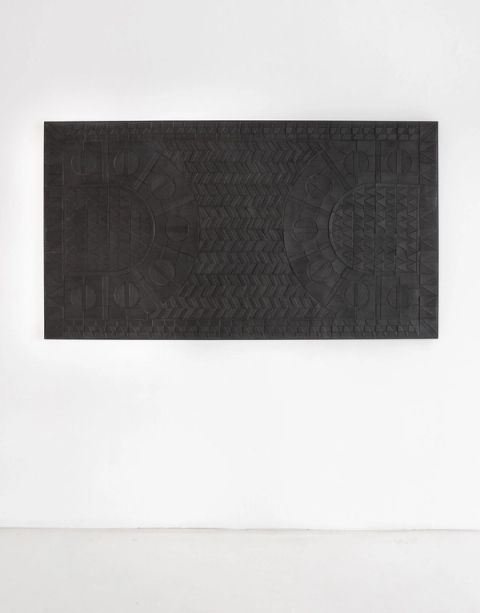
Chuma Maweni
Mandlakapheli Wall Panel, 2024Glazed stoneware
39.38 x 81.75 x 4 in. | 100 x 207.5 x 10 cm
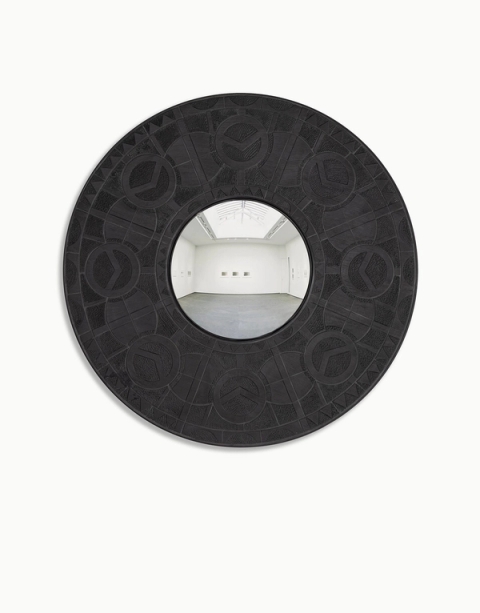
Chuma Maweni
Zoliswa (Qavashe), 2024Glazed stoneware, mild steel, mirror
51.13 x 51.13 x 3.13 in. | 130 x 130 x 8 cm
Edition of 8, 2AP
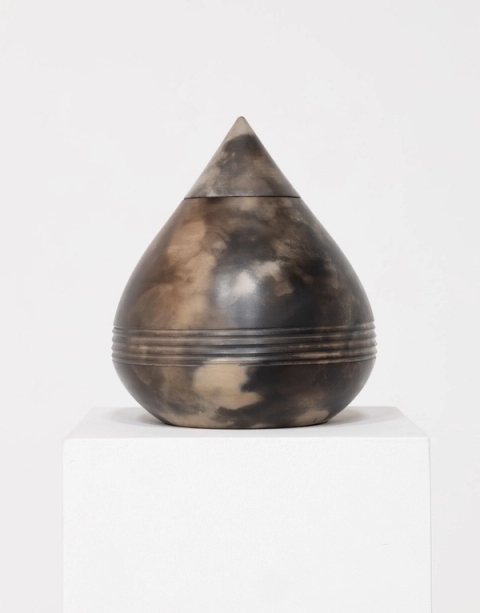
Chuma Maweni
Nomvula large, 2024Burnished, smoke-fired stoneware
10.88 x 9.38 x 9.38 in. | 27.5 x 23.8 x 23.8 cm
Open edition

Chuma Maweni
Nomvula medium, 2024Burnished, smoke-fired stoneware
9.5 x 7.63 x 7.63 in. | 24 x 19.5 x 19.5 cm
Open edition
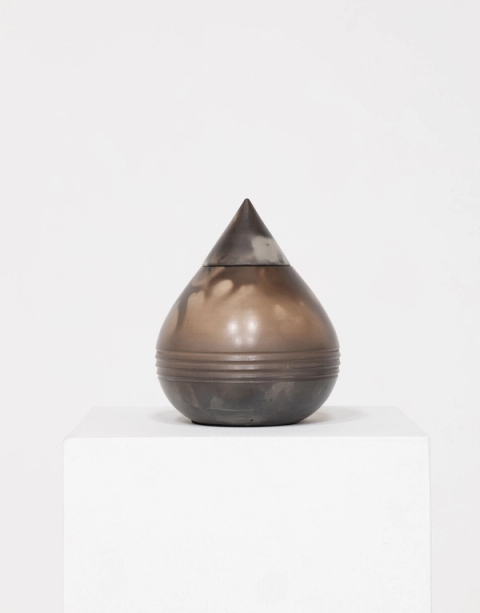
Chuma Maweni
Nomvula small I, 2024Burnished, smoke-fired stoneware
8 x 6.63 x 6.63 in. | 20.2 x 16.7 x 16.7 cm
Open edition
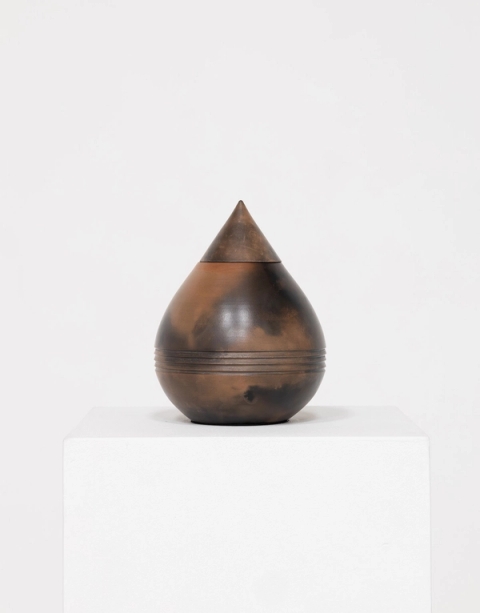
Chuma Maweni
Nomvula small II, 2024Burnished, smoke-fired stoneware
8.13 x 6 x 6 in. | 20.5 x 15.4 x 15.4 cm
Open edition
Sold
